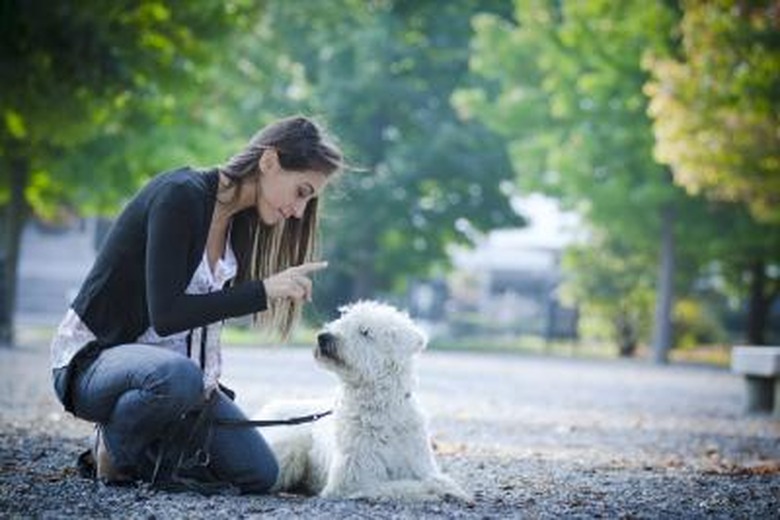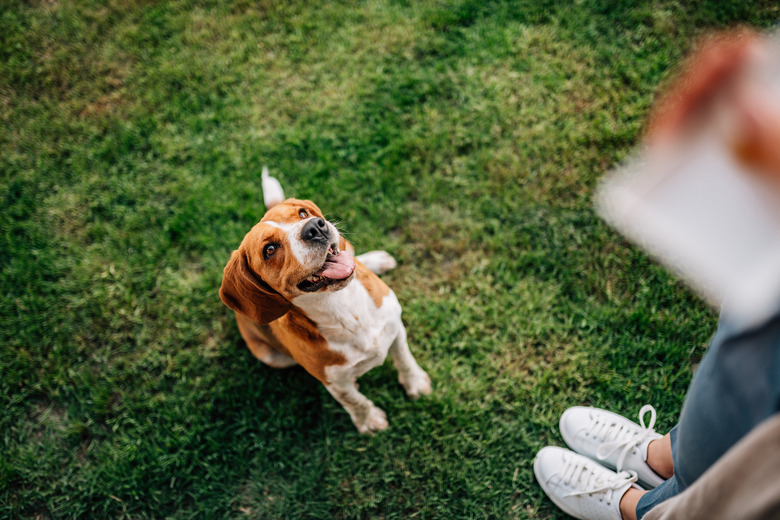How To Train Your Dog To Protect You
Many pet owners often ask, "Do dogs instinctively protect their owners?" Based on many years (up to hundreds) of breeding, some dogs are naturally prone to retrieve, hunt, dig, guard, and protect. Dalmatians, for example, were used for centuries as carriage dogs, providing protection from thieves. To this day, they are still very protective pets. Even if your dog isn't a breed that is naturally inclined to protect you, you can learn how to teach a dog to guard an object or person.
Protecting vs. attacking
Protecting
vs. attacking
Before you begin the process of learning how to train your dog to protect you, remember that your goal is to get your dog to help you, not to attack others. This means you'll want to train your dog to get between you and a potential threat, snarling and posturing instead of immediately jumping on another animal or person.
Each time your dog attacks — even if he's in the right — you might face a lawsuit. In addition, training a dog to attack can lead to the dog becoming overly aggressive. Depending on the amount of protection you want, you might decide to train your dog to attack only when barking doesn't work. That might be as simple as releasing the dog's leash and letting him attack.
Research the breed
Research
the breed
Learn about the behavioral instincts of your dog based on her breed. Some dogs are naturally friendly, while others are just the opposite. Some are good with children, while others are not. Perform web searches using your dog's breed and words like "protect" and "guard" to see if your dog has traits that already make her a good candidate for a guard dog.
Start with bark training
Start
with bark training
People and animals will be more fearful of a barking dog than one that stares intently or even snarls. Train your dog to bark (some are not natural barkers). Pick a bark command, which can be a word or phrase, such as "Bark, Duke!" Say the phrase and then bark yourself.
Keep trying the combination until your dog starts barking. When your dog barks the first time, give him praise, a pat, and a treat. After several successful tries, give the command only (don't follow it with one of your barks) and see if your dog barks in reaction to the command. If so, give praise, a stroke, and a treat.
Practice this throughout the week so the dog becomes used to it and becomes conditioned to do this.
Train positioning behavior
Train
positioning behavior
In order to protect you, your dog should get between you and the threat. After you have trained your dog to bark on command, train her to move in front of you and between you and the threat. You can practice this with a friend, keeping your dog on a leash.
Have the friend approach. Give the bark command and step backward, putting the dog between you and the "attacker." After your dog sees this behavior several times, give the bark command and then stay where you are, motioning and pointing to where you want the dog to stand. The first time she moves between you and your threat, give her a big hug, a treat, and praise.
As part of this training, your "attacker" should back off or start walking or trotting away after your dog gets between the two of you and barks. Give the dog praise after this happens each time so she will see what your goal is — to scare away an attacker.
Use positive reinforcement
Use positive
reinforcement
Always use positive reinforcement training rather than negative commands. If your dog moves the wrong way, don't say, "No!" or "Bad dog!" Simply model the correct behavior and reward the dog for correct responses. Repeat this until the behavior becomes automatic during the session and continue practicing during the week.
Train the opposite response
Train
the opposite response
Make sure your dog does not associate all strangers with threats. Your dog should only protect and defend you after you give your bark command. Practice walking and meeting strangers, correcting your dog if he starts barking at a cyclist, jogger, skateboarder, or another animal. Use positive reinforcement, including praise, caresses, and treats.


